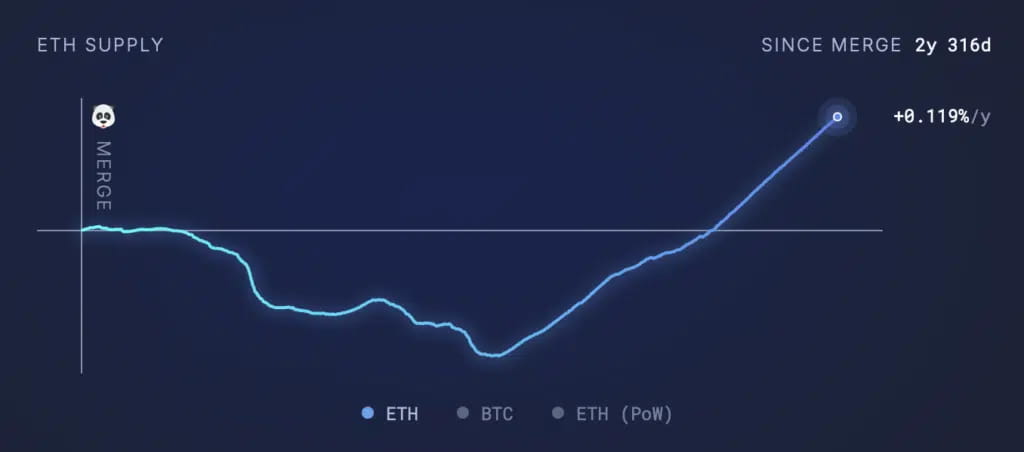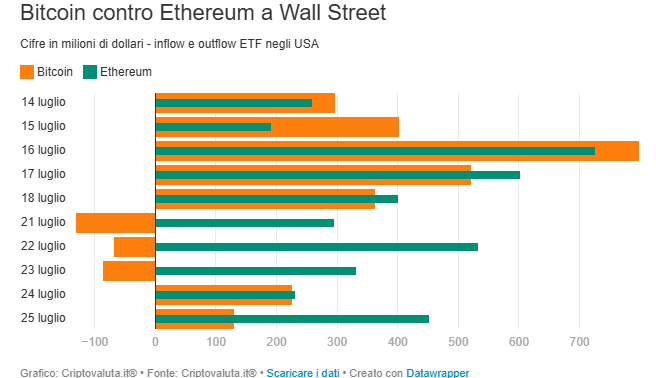Ethereum is the hottest crypto at the moment. On Wall Street, between ETFs and listed companies, billions in investments arrive every week. The price has strongly recovered from its April lows, and everyone seems to have forgotten that they considered it dead.
Everyone talks about it, no one knows it: perhaps you didn't know these things...
Ethereum $ETH is the reference cryptocurrency of a complex, heterogeneous system that is, however, very central in the entire landscape of digital assets.
This is where most of DeFi happens, where the best protocols were born, and where the most money circulates, to put it in the most vulgar way possible.
1. Variable monetary policy
The monetary policy of Bitcoin is simple to understand. That of Ethereum is a bit less so. Bitcoin produces new BTC with each block, and about every 4 years, the amount of BTC assigned to those who mine a block is halved.
With Ethereum, everything is more complex: the fees paid by users to make transactions are destroyed. You pay, the ETH you spent on fees disappears from circulation.

Net issuance of ETH – source: UltraSoundMoney
There is also new production of $ETH, which is assigned to validators. This means that depending on how many fees are paid in total, ETH can be deflationary or inflationary. The chart should clarify the mechanism. In times of large movements (and thus higher fees), ETH can become deflationary.
2. Yield!
Unlike Bitcoin, Ethereum has a yield. It is a mechanism halfway between bond coupons and dividends. It is very appealing to old-school investors because while being long, you still earn something.
Soon staking will also arrive in ETFs listed in the USA, which will make these products even more appealing to the institutional world.
3. A trick
Ethereum can be usefully employed to earn something while being delta neutral, that is, essentially indifferent to price movements.
Ethena is already doing this with its USDe. This can be done with almost all crypto, but it works a little better with Ethereum.
Long with 50% of the capital on Ethereum, possibly putting it in staking or using liquid staking like Lido or Rocket Pool.
Short with the remaining 50% on perpetual futures.
How do you earn? From the 50% staking, plus from the funding rates of the 50% short in futures. Returns can be high, especially during the most bullish market moments (when funding rates increase in favor of those who are short). If the price moves, the combined long/short position will still maintain the value of our investment constant.
4. Central
There are few networks that have managed to emerge without having some compatibility with Ethereum's EVM. Even Ripple has recently equipped itself with a sidechain that allows compatibility.
Without getting too technical: Ethereum is still very central with its standards. And it will continue to be so, even in the future.
5. BlackRock
Having an ETF managed by BlackRock makes all the difference in the world in terms of credibility, at least in the eyes of old-school investors.

BlackRock has spent its credibility in the markets to promote its ETF on ETH, clearly to profit and not for political battle.
However, it has already helped a lot – even in terms of price – Ethereum and will likely continue to do so in the future.
#AmericaAIActionPlan #BTRPreTGE #CryptoClarityAct #NextCryptoETFs?




